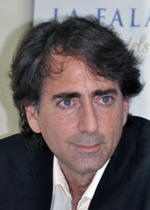
MARRAKECH, Morocco — October 17 marks the International Day for the Eradication of Poverty. The commemoration of this day suggests that the way to end poverty is not a matter shrouded in mystery. In fact, its celebration denotes that, at a minimum, the manner to end poverty is most likely established knowledge. While it could withstand further evaluation, its people-centered methodology is tested as plain as day, and it is as well understood as the brutality of en masse denial of the potential of our humanity.
The process of planning actions that eradicate poverty conditions is synonymous with the experience of designing sustainable development or enterprises in societies that experience long life. In a nutshell, we – the public of all walks – must plan together in consideration of the great range of factors that impact and are impacted by social change.
The intentional and unintentional forces that are leveled by societies, and that manifest due to the natural world, that cause growth or demise of an intervention in promoting our general welfare, are relevant in the different areas where we seek improvement. For example, what are the economic and environmental implications of an agricultural enterprise? What are the political repercussions of ending women’s illiteracy? What are the cultural dimensions that hinder or set free the innovation of youth? What are the technical and financial assessments of rural cooperatives’ product-processing activity? What has history taught us about the future when we establish clean drinking water projects that rid ourselves of water-borne diseases and the loss of infant life?
We must view development from all these lenses and dimensions if we are to establish projects that can, over time, strike the deepest blows into poverty. Most critically, how do we enact this kind of multifaceted dimensional planning, considering that no one person or agency can bring to bear all of these angles to identifying an effective social action? It requires the participation of the people, whose poverty is intended to be eradicated, and who are targeted to be the beneficiaries of change, to engage in their own assessment of what will be best for them, involving the inclusive dialogue among women and men, members of all ages, and sectors. Individually, they combine into the many points of view necessary in achieving the balanced design of poverty-ending projects by and for the people.
I project that the people who experience harsh poverty situations, carried down from the past and transmitted further into the future, will one day rejoice when international and domestic developmental assistance will be applied to accomplish the priorities that they determine through their own analysis, discussion, and consensus-building procedures. The International Day for the Eradication of Poverty will never know its last heralding without a number of key realities, one of them being that the matter of allocation of development finance is a community matter, and not for the strings pulled by external others. Further, the world’s Sustainable Development Goals will finally be a juggernaut on the high-road to their fulfillment, when their composition is the aggregate of all the self-defined needs of local communities and neighborhoods on the planet.
Since most poverty on earth afflicts rural people, we should acknowledge that food growers’ associations must also be processors of their bounty. Growers’ capacities must be invested in, to enable the physical infrastructure of water efficiency, to improve upon cultivation and their abilities, and to forge their cooperatives in partnerships that help attain market reach and sustainability. Many nations see the majority of rural girls not going on to secondary school, yet they can and should be breadbaskets for themselves and the blocs of nations of which they are part. A travesty of rural poverty is that it takes place in the very space where there is the vastest potential for most prosperous shared growth.
An astute truth of this International Day is that it is inextricably bound to human rights. How can we manifest the change in our hearts when we have never been asked what may be our own personal vision for our future? How can we courageously put forward our own interests when they have been denied and unacknowledged for the most part of our lives?
It is so immensely difficult and perhaps unfair to expect that we speak to power – which dominates in hamlets as it does in world affairs – when those groups who wield it have done so for ages. The eradication of poverty must start with dismantling those inhibitions and doubts that prevent the assertion of our self-belief, and instead lead to the questioning and redefinition of those relationships that oppress and control. It is then, when we enter into development planning, that we become most robust in our discovery and achievement of opportunities that will once and for all bring poverty to heel, and give rise to our best days on earth.
*
Dr. Yossef Ben-Meir is President of the High Atlas Foundation, a not-for-profit organization dedicated to sustainable development in Morocco.
Totally agree with you Dr.
Your analysis of the situation and your guidance of the poverty eradication method are amazing.